How to clean a mattress — expert tips for urine, bed bugs, sweat and more
Removing stubborn stains from your mattress is easy with these hacks
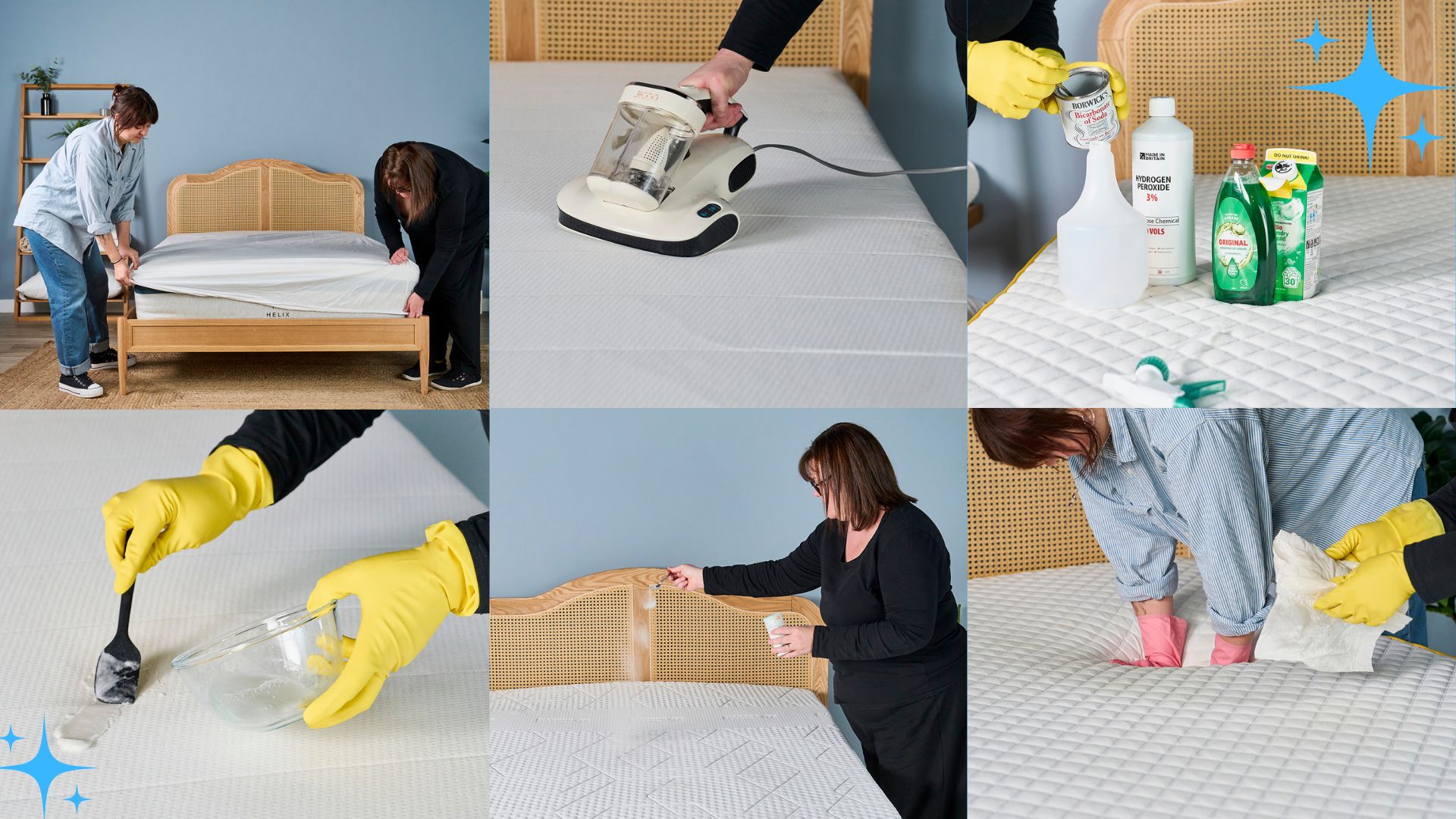
A clean and fresh mattress is essential for good health and restful sleep. However, over time, sweat, dust, dead skin cells and natural body oils can build up on the surface of your mattress, leading to unpleasant odours, stains, allergies and eventually the breakdown of the mattress meaning it'll lack support and feel uncomfortable.
That’s why cleaning your mattress is one of the most important tasks and one of the best ways to maintain a healthy sleep environment. And whilst it’s not the most glamorous task, luckily, with the right tools, it doesn’t need to be difficult.
Whether you sleep on plush memory foam or a breathable hybrid, regular mattress maintenance won’t just keep your bed clean and fresh, but it can also help extend its lifespan. When you invest in one of the best mattresses, you want to get your money's worth, so keeping it clean is essential for maintaining optimum comfort and support.
In this guide, we will walk you through how to clean every type of mattress, using tried and tested methods, clever hacks and essential products that will help you easily clean your mattress.
Quick mattress cleaning hacks
Whilst we will get into the nitty-gritty of mattress cleaning in our full guide, if you’re short on time, here are some quick mattress cleaning hacks that we swear by, plus a simple-to-follow video of a mattress cleaning routine.
Deodorize your mattress with baking soda: Strip your bed and vacuum the mattress before sprinkling a generous layer of baking soda over the surface. Leave for at least an hour (but the longer the better) before vacuuming again.
Vacuum often: Vacuuming your mattress on a regular basis is the easiest way to keep your mattress clean. Ideally, you should do this weekly and make sure to use the upholstery attachment to avoid damaging the fabrics of your bed.
Get instant access to breaking news, the hottest reviews, great deals and helpful tips.
Spot clean any stains: Tackle stains as soon as possible. Do this by mixing one part white vinegar, one part water, and a couple of drops of mild dish soap in a clean spray bottle. Spray this onto the area, being careful not to oversaturate the surface, and then blot to start lifting the stain. Remember to never rub a stain as it can cause it to go deeper and start to spread.
Use rubbing alcohol: Rubbing alcohol is great for disinfecting your mattress, helping to remove common mattress stains and odours. You can use it in two ways: the first is to add it to a spray bottle and spritz a light mist over the surface of your mattress and leave to dry, just to get rid of any odours. Or you can spray a stain or mark and then blot dry to help lift it.
Leave your mattress to air: When you strip your bed, vacuum the surface and just leave your mattress to breathe for a few hours. This can help freshen up your bed and prevent mattress mould, which can cause some serious risks to your health. Here’s how to spot signs of mattress mould and deal with it quickly.
How to clean a mattress: What you’ll need
Essentials:
- Vacuum cleaner: Use a regular vacuum with an upholstery attachment to avoid damaging the mattress fabric. A UV light is optional.
- Baking soda: Essential for lifting stains and eliminating odours.
- White vinegar: Effective for breaking down stains and killing bacteria.
- Clean paper towels or microfiber cloths: Needed to blot excess liquid. Microfiber cloths are reusable, but paper towels are easier for fresh spills.
- Spray bottle: Helps apply liquids without oversaturating the mattress.
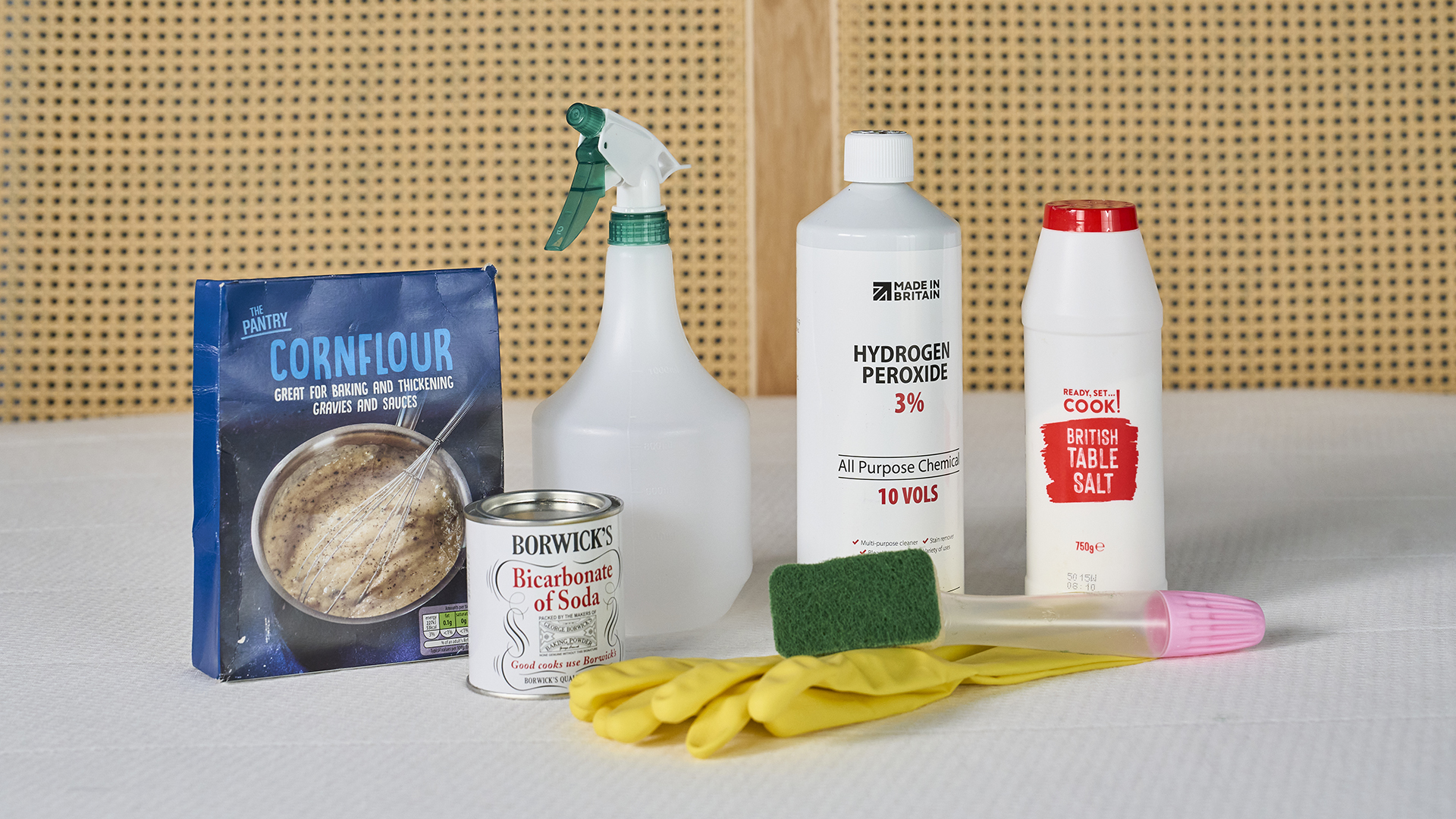
For stain removal:
- Hydrogen peroxide (3%): Safe for home use, effective on tough stains like urine and blood. Use gloves and avoid mixing with other chemicals.
- Mild soap: Dish soap or laundry detergent for spot stains, gentle on mattress fibres.
- Cornstarch: Absorbs moisture and oily stains, effective with sweat or urine, especially when combined with baking soda.
How to clean a mattress: Type of mattress
There is no one-size-fits-all all method when it comes to cleaning mattresses, because what your mattress type is can make a huge difference. Here’s the best cleaning method for your mattress…
Memory foam mattresses
Cleaning your memory foam mattress might seem challenging, but with the right tools and techniques, it’s simple.
Whether you’ve spilled something or just want to freshen up, regular cleaning can extend the life of even the best memory foam mattress.
The key is to avoid getting it too wet, as memory foam absorbs liquids quickly but dries slowly, increasing the risk of mould and mildew. It also absorbs sweat, oil, dust, and allergens.
Follow these steps to clean your memory foam mattress:
Step 1. Remove all the bedding
Strip all your bedding, including your mattress protector. It is worth noting that if you’re dealing with any immediate liquid on your mattress, always remove that first by blotting the area with a clean, dry cloth or paper towel.
Step 2. Vacuum thoroughly
Using your vacuum with the upholstery attachment, go over the surface of your mattress to remove any loose dust or debris. Make sure you go right into the corners or tufts where dust is likely to accumulate.
Step 3. Spot clean any stains
Next, you need to treat any stains, to do this mix together a couple of drops of mild detergent with water in a clean spray bottle. Spray the mixture on to the stain being mindful not to saturate bed. Then, using a dry cloth, dab the area to start lifting the stain.
Step 4. Deodorize with baking soda
Sprinkle a layer of baking soda over the mattress. Leave this to rest on your mattress for at least four hours (or longer) before vacuuming again.
Step 5. Air dry
Leave your mattress to sit in a well-ventilated room to dry fully. You can use a fan or dehumidifier to speed up the process, but don’t use heat because it can damage the foam’s structure and cause it to break down faster.

Hybrid mattress
The best hybrid mattresses blend foam layers with springs for comfort and support, and they’re also known for being breathable, making them some of the best cooling mattresses.
However, they require careful cleaning due to materials like memory foam and latex, which don’t handle moisture or heat well. Cleaning should avoid soaking the foam while addressing dirt and stains.
Use the following steps to clean a memory foam mattress:
Step 1. Prepare your mattress
Prepare your mattress for cleaning by removing all your bedding, including the mattress protector.
Step 2. Vacuum your mattress
You want to make sure that there’s no dirt or debris on your bed, so vacuum the entire surface of your mattress using the upholstery attachment. Pay special attention to the corners as this is where dust and dust mites tend to hide.
Step 3. Deal with any stains.
Treat mattress stains on your hybrid mattress by mixing together one part white vinegar, one part water in a clean spray bottle. Spray the area and then sprinkle some baking soda on top and, gently using your hands or a soft-bristle brush, work it into the area. Leave it to sit for around 20 minutes.
Step 4. Vacuum and blot the area
After you’ve waited 20 minutes, vacuum the baking soda, ensuring that you leave behind no residue. Dampen a clean cloth with cold water and blot the area to lift the stain. Once the stain has lifted, take another clean cloth and blot the area to ensure any excess moisture is removed. Then leave your mattress to dry.
Step 5. Repeat if needed
If the stain hasn’t completely gone, just repeat these steps. We would recommend leaving your mattress to dry in between so that you don’t risk oversaturating the bed. Whatever you do, don’t be tempted to reach for any harsh chemicals as this can cause irreparable damage to the materials used in your mattress.
Step 6. Freshen it up
If your mattress has a bit of an odor, don’t worry, that’s completely normal. To freshen your mattress, sprinkle a layer of baking soda over the surface — you may want to add a couple of drops of essential oils to make it smell nice. Leave it to rest for a couple of hours, then vacuum the surface again. Check that your mattress is fully dry before readding your bed sheets.
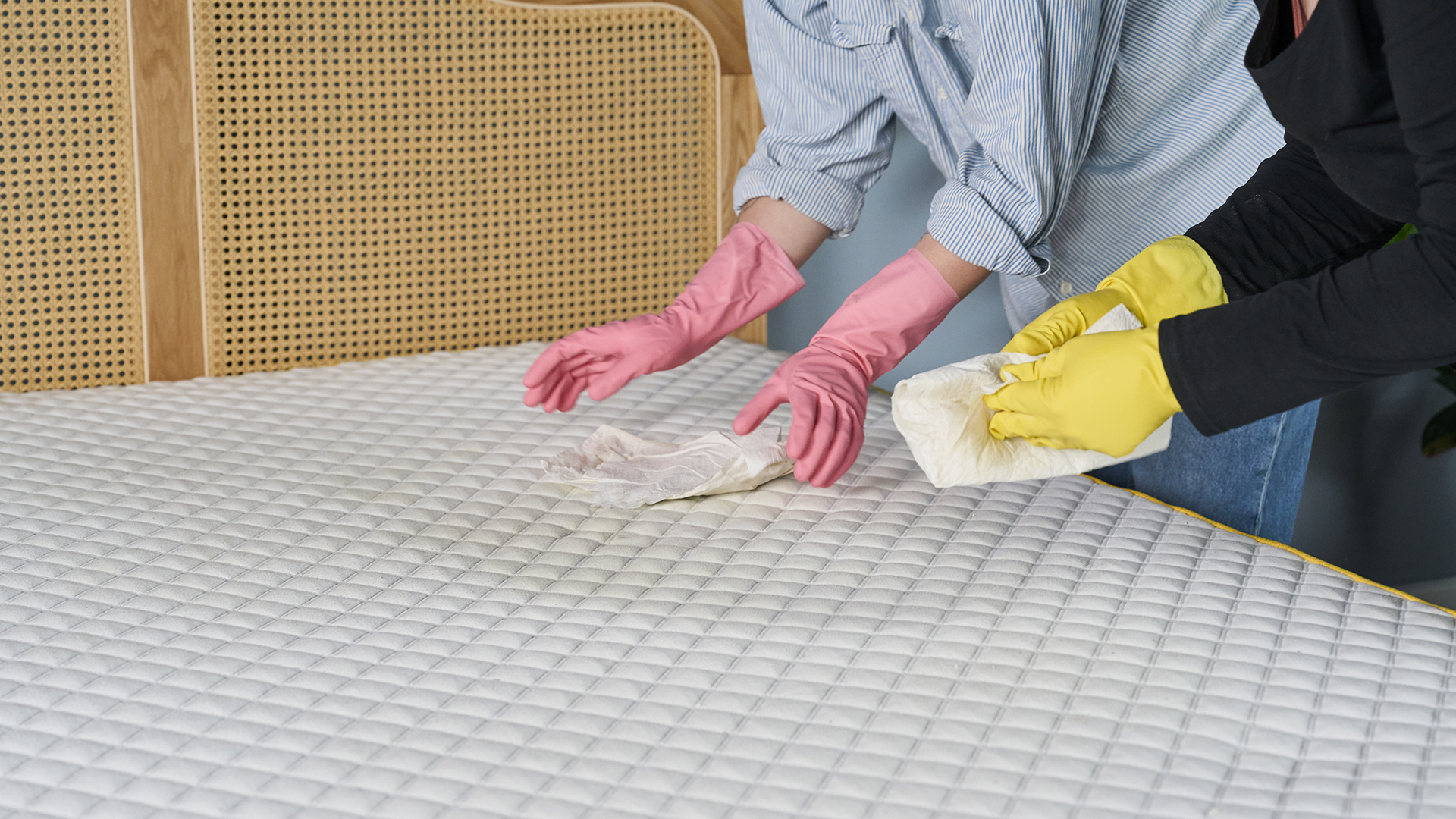
Latex mattress
Latex is a natural, durable material but requires careful maintenance.
Like memory foam, latex mattresses are sensitive to excess moisture, which can lead to material breakdown over time. It dries slowly, making it prone to mould and mildew if not dried properly.
Follow these steps to clean a latex mattress:
Step 1: Remove the bedding and inspect the surface
Remove all your bedding, including the mattress protector and inspect the surface. Look out for any stains, dust, debris or signs of moisture damage. Remember that while latex is resistant to pests like dust mites and allergens, it’s not immune, so regular checks mean you can tackle any issues as soon as they arise.
Step 2. Vacuum (but with caution)
Latex may be durable, but it also needs to be handled properly. Using the upholstery attachment, go over the surface. Do not use the high suction mode, instead stick to low or eco mode as if the suction is too high, it could pull and distort the latex.
Step 3. Spot clean stains with a gentle solution
Remove stains using a simple solution of water and a teaspoon of mild soap or laundry detergent. Dampen a clean cloth with the mixture and make sure you wring it out thoroughly. Then gently blot the area to start lifting the stain. Once your stain has gone, take another clean cloth and dampen it with cold water, and just blot again to remove any leftover soap residue.
Step 5. Deodorize your mattress
Mattress smells can happen. But these are easy to get rid of by just mixing together some baking soda and a couple of drops of essential oils before sprinkling over the surface of your mattress. Leave this sit for at least four hours.
Step 6. Vacuum and leave to dry
The final step is to vacuum your mattress again. Don’t be tempted to use a heat source like a hair dryer as this can damage the materials. If you want to speed up the process, consider using a fan. When drying, never place your latex mattress in direct sunlight as the UV rays can break down the material, causing it to become discolored, brittle and less supportive.

Organic mattress
Organic mattresses are typically made using natural materials like cotton, wool and latex.
You have to be very careful about your cleaning methods as wool and cotton can be very absorbent and need gentle cleaning to avoid shrinking or damaging the materials.
Use the following steps to clean an organic mattress:
Step 1. Remove all your sheets
Remove all your bedding and leave your mattress to air for at least 30 minutes. This will help to get rid of any trapped moisture or odors.
Step 2. Vacuum the surface
Vacuum the entire surface of your mattress on low suction mode using the upholstery attachment. Make sure that you go around the edges, seams and tufts a couple of times as this is where dust tends to settle.
Step 3. Spot clean stains with a natural solution
Treat stains immediately by mixing a cup of water, 1/2 a cup of white vinegar and a teaspoon of mild laundry detergent in a clean spray bottle. Lightly mist the stained area (remember, do not soak) and then blot the area with a clean cloth until it comes back dry. Then take another damp cloth and repeat the blotting process to remove any excess detergent residue.
Step 4. Use baking soda to deodorize then vacuum
To refresh your mattress, sprinkle a layer of baking soda over the entire surface. Leave for at least four hours, but the longer you can leave it the better, as it will absorb any excess moisture and odors that are set within the mattress. Once the baking soda has rested, vacuum again.
Step 5. Air dry and then rotate the mattress
Leave the mattress to dry fully before remaking your bed. This may take some time, so always leave plenty of time to fully complete the cleaning task. One last job to do before you add your bedding is to rotate your mattress (head to foot) to help promote even wear.
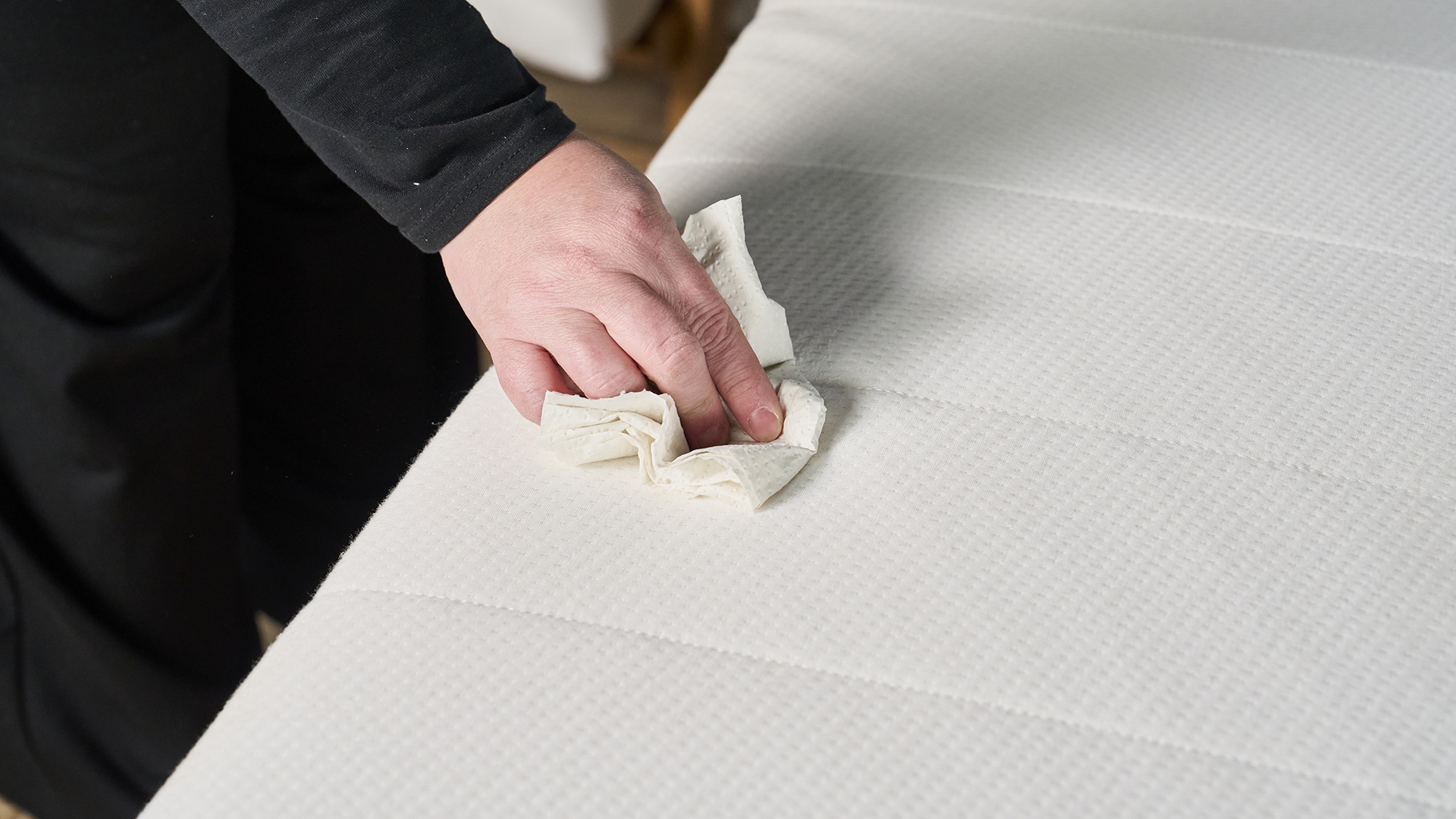
How to remove stains from a mattress
Now we’ve covered general mattress cleaning, let’s move on to stains. Removing mattress stains as soon as you see them isn’t just good for hygiene, but it can also help preserve the lifespan of your mattress.
Stains from sweat, spills, accidents or body fluids, if left, can lead to unpleasant odors, bacteria growth and even mattress mold. This will lead to the breakdown of your mattress , potentially making it less comfortable or lacking support.
Here is how to tackle stains on your mattress:
Urine
- Cloths or paper towels
- Mild detergent
- Baking soda
- White vinegar
- Rubbing alcohol (optional)
- Spray bottle (optional)
Urine stains can be tricky, especially if they’ve had time to soak in. The key is to act fast.
As soon as you notice urine on your mattress, blot up as much liquid as possible. Never rub the area, as this will cause the stain to move or be pushed deeper into the fibres.
Then:
1. Mix equal parts of white vinegar and water in a spray bottle. Add a small drop of a mild detergent and spray the stained area.
2. Leave for 5-10 minutes and then blot with a clean cloth until it dries.
3. Sprinkle with a layer of baking soda and leave for at least four hours, but more if possible.
4. Vacuum thoroughly.
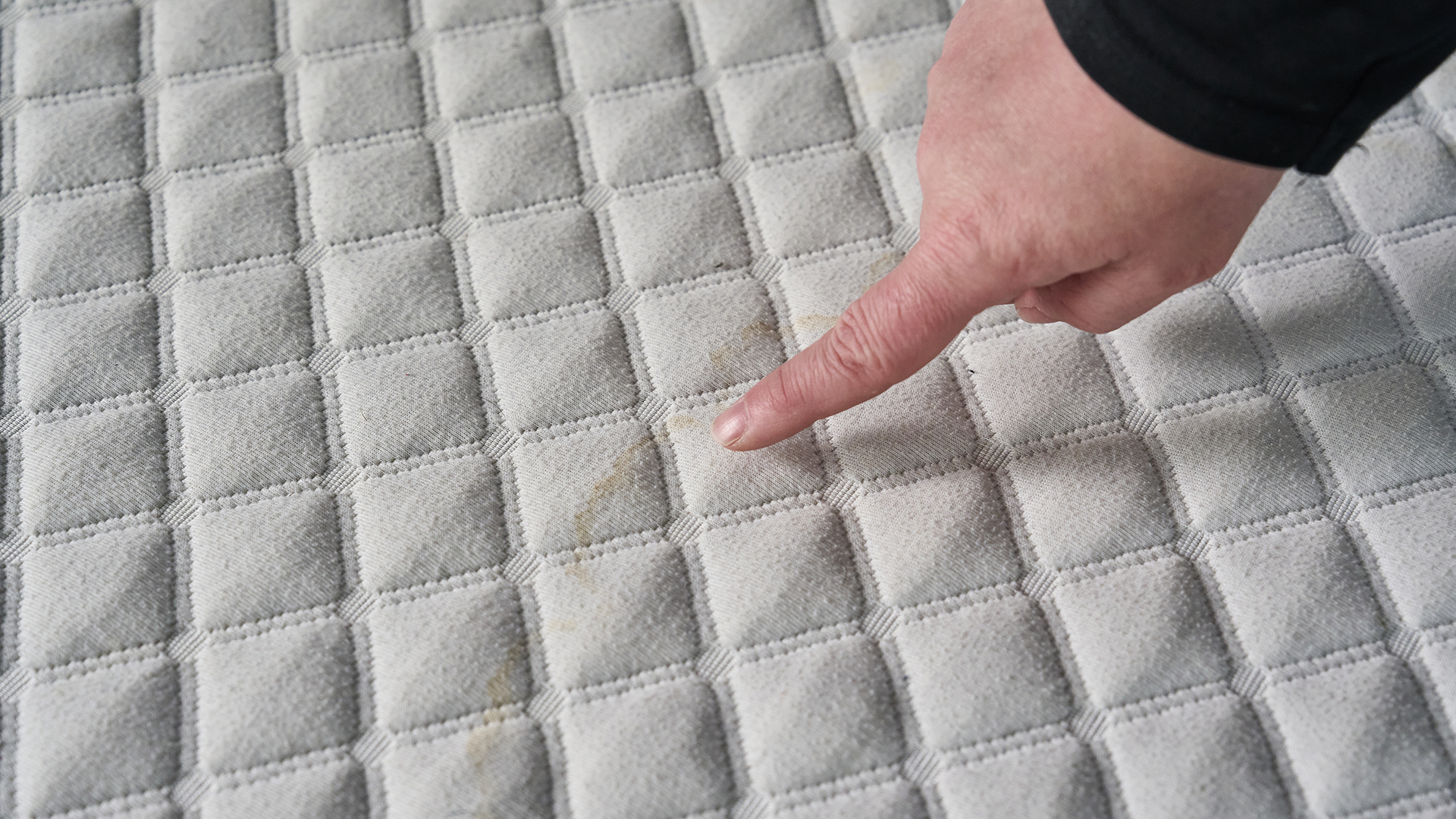
You may need to repeat these steps depending on how long the stain has been there.
To eliminate any lingering odours, spray a light mist of rubbing alcohol over the bed. Rubbing alcohol should be at least 70% proof and is great for breaking down and dissolving organic substances like urine smells.
Blood
- 3% hydrogen peroxide
- Baking soda
- Clean cloths or paper towels
- Small bowl or spray bottle
- Cold water
Blood stains are protein-based so you need to tackle them differently. When dealing with blood always use cold water and avoid hot water as that will set the stain and push it deeper into the fibers, making it more difficult to remove.
1. Spritz the stain with cold water and then blot with a clean, dry cloth to absorb as much moisture as possible and to start to shift the stain.
2. Dab a small amount of 3% hydrogen peroxide directly onto the stain and sprinkle a small amount of baking soda and gently massage it in - do not rub.
3. It will start to fizz, this is normal and it just means that it’s reacting with the blood. Leave it to sit for about 10 minutes before blotting with a clean, damp cloth.

You may have to repeat this if the blood stain has been left to dry in. If it’s a very stubborn stain, follow the steps again and leave it for up to an hour before rinsing with a damp cloth.
Always leave your mattress to fully air dry before remaking your bed.
Vomit
- White vinegar
- Baking soda
- Mild soap
- Water
- Essential oils (optional)
- Microfibre cloths
Start by removing any solid vomit with paper towels and blot to remove any excess moisture. Then mix together your cleaning solution of one part white vinegar and two parts water.
1. Dampen a cloth in the solution and gently blot the stained area
2.. Then dip a clean cloth into a mixture of cold water and mild soap to clean the surface.
3. Repeat these two steps a couple of times to ensure that the stain has completely lifted. Then with a clean cloth, rinse the area with water to get rid of any soap residue.

To tackle the smell, sprinkle baking soda with a couple of drops of essential oil and leave this sit for around six to eight hours.
Ideally, you’d leave it overnight to give it the best chance of working. After it's rested, vacuum away the baking soda and ensure that you leave your mattress to fully dry before sleeping on it.
Sweat
- Baking soda
- White vinegar
- Cornstarch
- Cold water
- Clean cloths
- Spray bottle
- Vacuum with upholstery attachment
Even if you change your sheets on a regular basis, sweat and natural body oils can still soak into your mattress causing yellowing and funky smells.
It doesn’t just look bad but can also pose a hygiene risk as it creates the perfect environment for bacteria to thrive.
1. Mix together equal parts of white vinegar and cold water in a spray bottle. This will help to break down the stain whilst neutralising the smell.
2. Spray the area and then, with a clean cloth blot the area
3. Once slightly damp, mix together equal parts baking soda and cornstarch and sprinkle a generous layer over the area.
4. Leave this sit for around four hours to help break down the stain, draw out the moisture and absorb the smell.
5. Finish up by vacuuming thoroughly.
You may need to repeat these steps if the stain is particularly deep. But this method is gentle enough to be used on all mattress types.
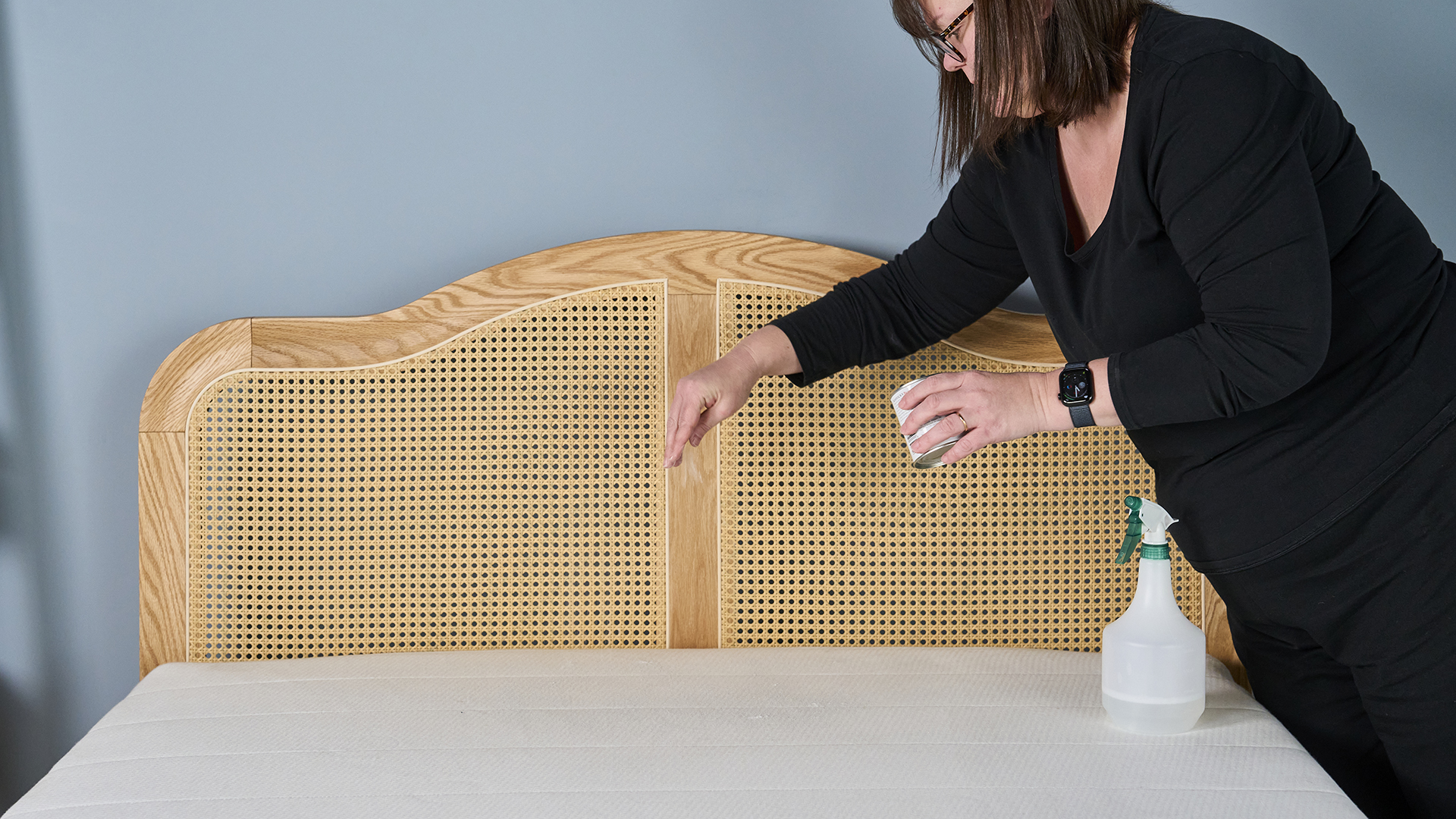
How to remove bed bugs
Bed bugs are something that no one wants in their bed. They can cause itching, allergic reactions and seriously disrupt your sleep. If you suspect you have an infestation, then it’s critical to act fast.
Start by stripping your bedding and wash everything on a hot cycle to kill any live bugs and their eggs.
Next, vacuum the surface and when you empty your vacuum, do so in a sealed bag and take it straight outside to avoid spreading the bed bugs to different areas.
Now you need to tackle the bugs with heat. Use a steam cleaner on the mattress surface, ensuring that the temperature reaches at least 50º, as this is the temperature that will kill any bugs and eggs.
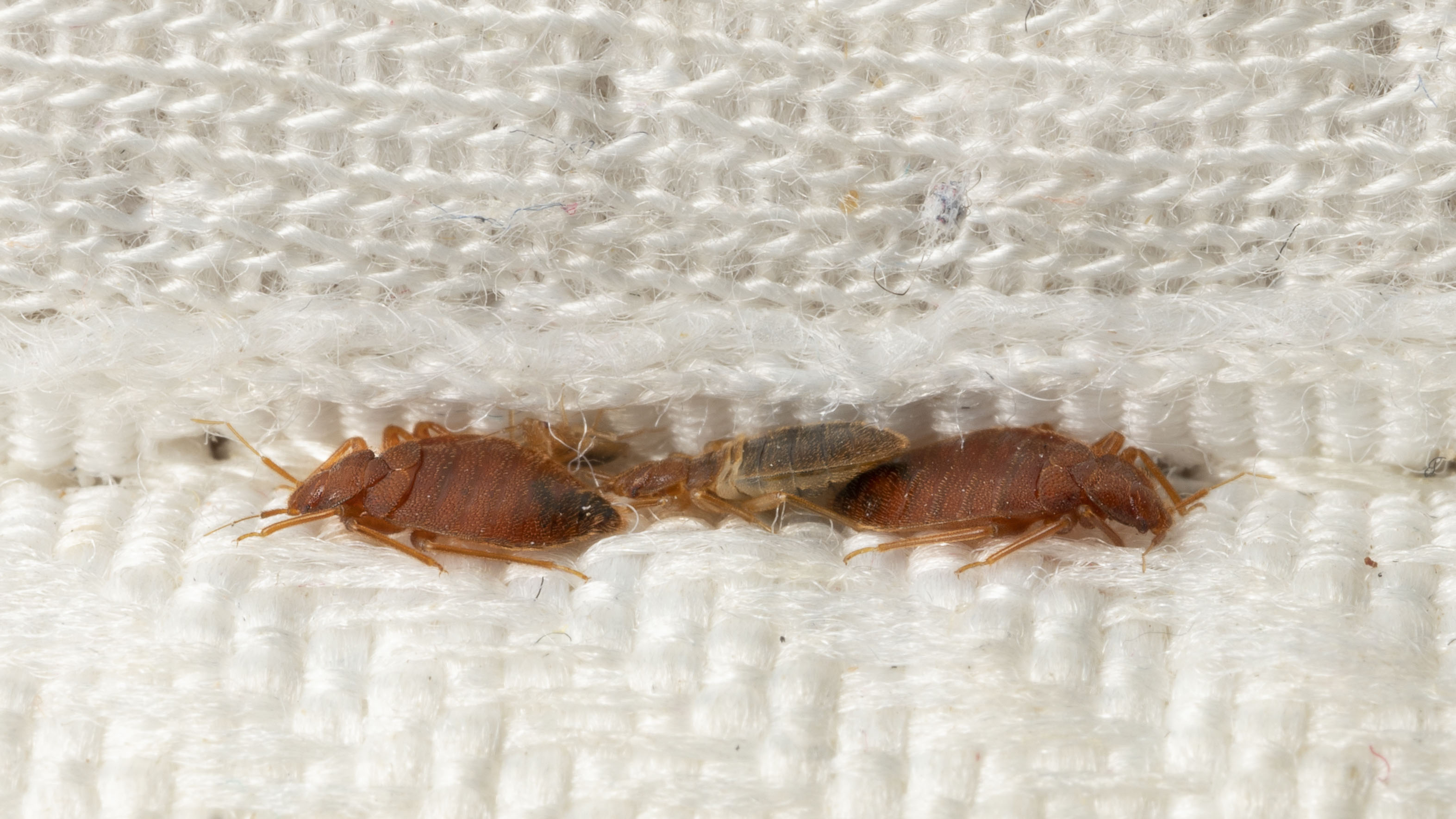
Repeat this at least one a week for a month to ensure any remaining eggs are killed. If you have a memory foam mattress, steam may damage the foams. Instead, it's best to call an exterminator to ensure no bed bugs are left in your room.
Invest in a mattress encasement, which seals all sides of your mattress and will stop bed bugs, dust mites and any other allergens from reaching your mattress.
How to clean mattress mold
Mattress mold is serious, it can cause respiratory issues, allergies, and worsening asthma. It forms from trapped moisture due to sweat, body oils, accidents, spills or humidity.
Prevent it by treating spills immediately and leaving your bed unmade for a few hours each morning to let moisture escape.
If you do have mattress mold then you can treat it by spraying your mattress with equal parts water and white vinegar and then using a soft bristle brush, gently scrub off any visible mold spores. Next, lightly mist the area with some rubbing alcohol and blot with a clean cloth.
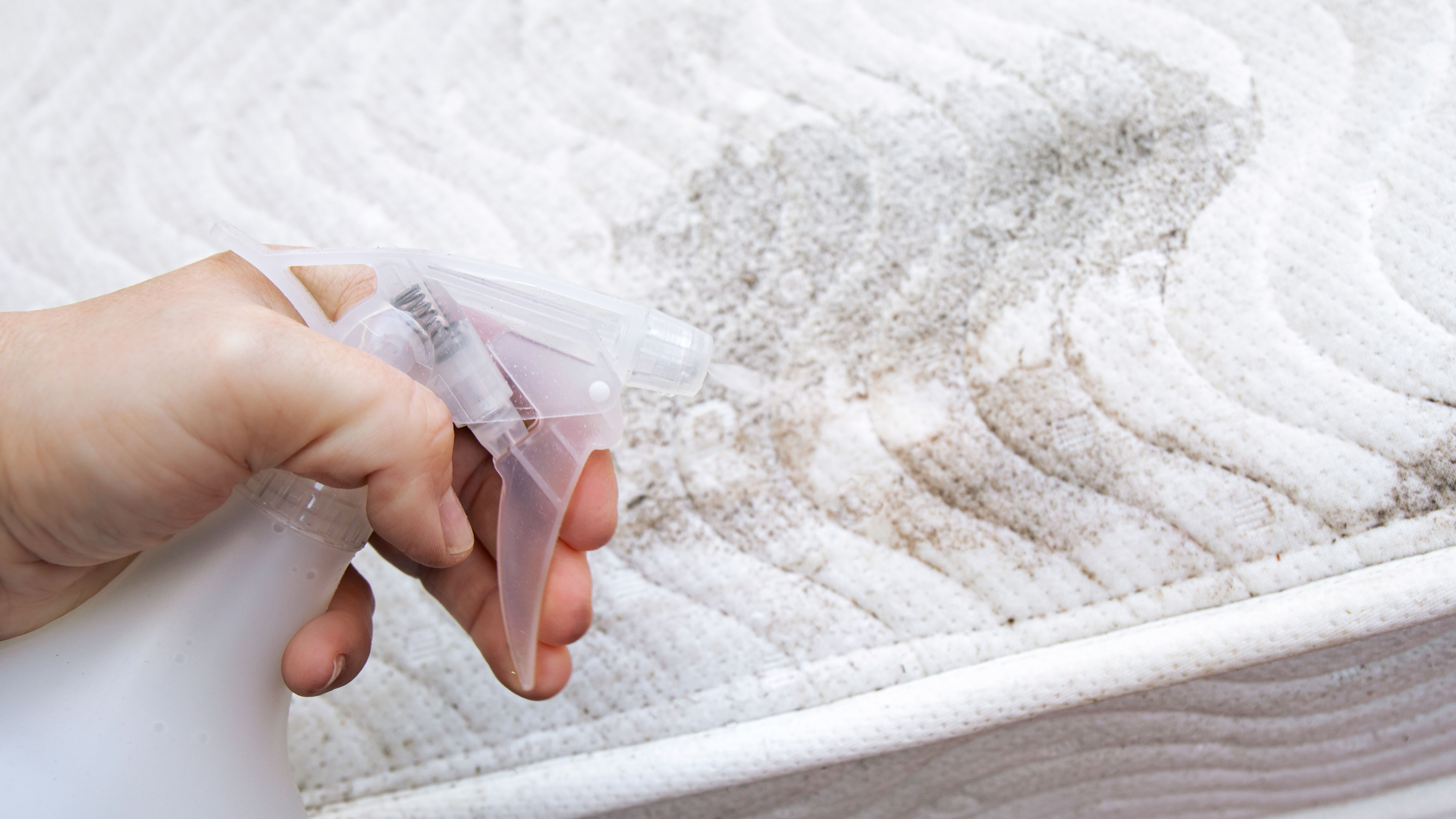
When cleaning your bed, always leave your mattress to fully dry. Finish up by vacuuming the whole mattress and always empty it into a sealed bag and place in the bin outside. This will ensure that you don’t spread the mold.
Also, regularly air your mattress and if possible, place your bed in direct sunlight (unless you have a latex mattress) as the UV rays are a natural disinfectant and kill mould spores naturally.
And if you have someone to help you, pull your mattress off the frame and stand it against the wall so all areas of your bed get a good airing.
It isn’t always possible to remove mold, so if it returns or is severe, it will be better to replace your mattress altogether.
How to keep a mattress clean
Regularly vacuum
One of the best and easiest ways to keep your mattress clean is to vacuum on a consistent basis.
Dust mites, pollen, crumbs, dead skin cells and sweat all collect on the surface of your mattress and as time goes on, this sinks into the fibers.
If left unchecked, this can then lead to allergies, stains and smells. And don’t forget to sprinkle a layer of baking soda on the surface and leave for a few hours before re-vacuuming to freshen it up.
Air your mattress
Airing out your mattress is a simple and effective way to keep it clean and free from moisture build-up.
Air your mattress out by stripping off all the bedding, including the protector. Then open up the windows and leave the fresh air to circulate.
Make this a habit that you do at regularly. You can also stand the mattress upright for extra airflow on all sides.
Use a mattress protector
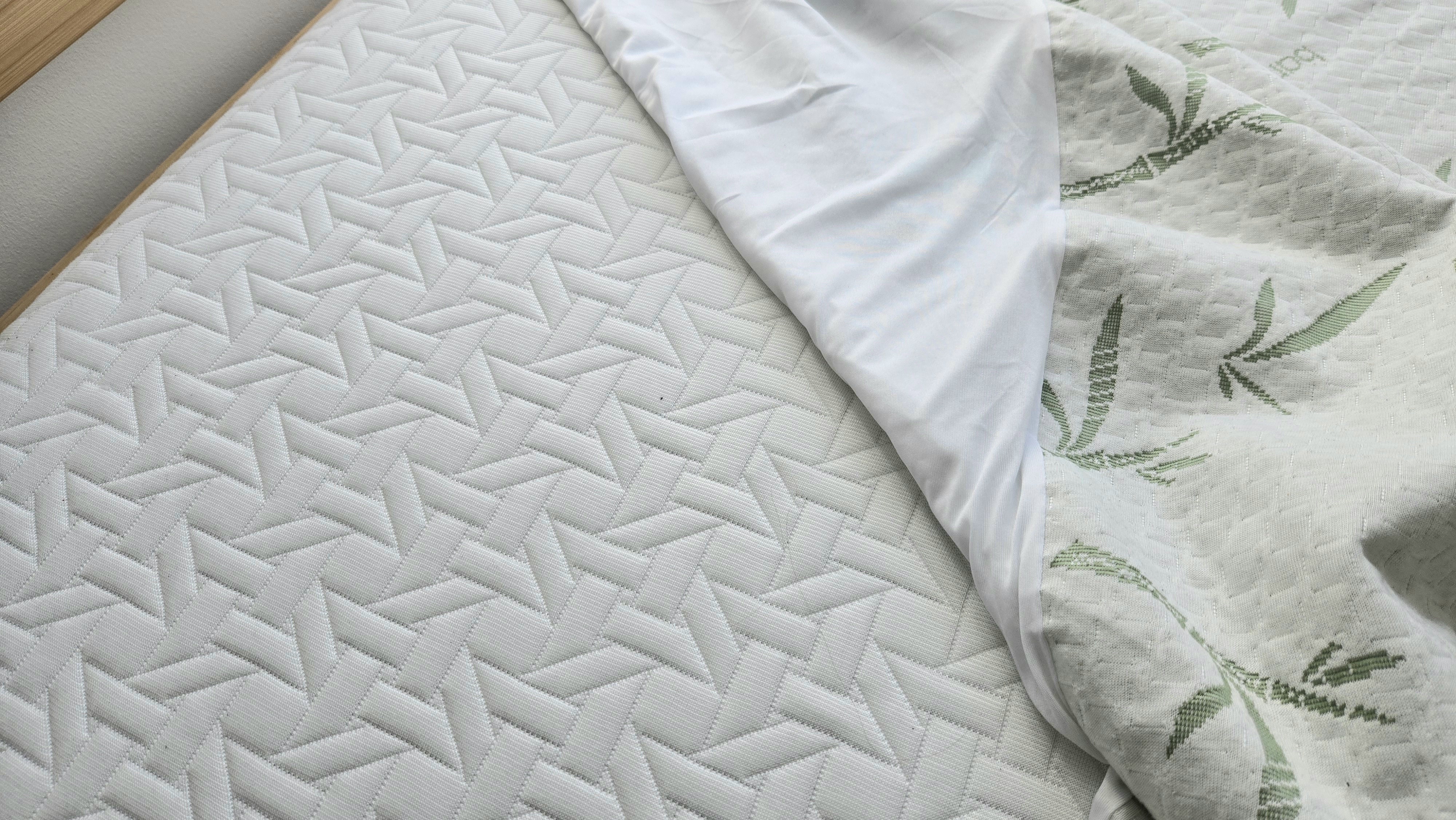
Investing in the best mattress protector is absolutely essential for all mattresses. A mattress protector provides a barrier between you and your mattress and is a good way of keeping it free of spills, accidents, body oils, sweat, dust-mites and allergens that can soak into the layers.
How to clean a mattress: FAQs
How often should you clean a mattress?
Regular mattress maintenance is essential. Different jobs should be done at different times throughout the year.
But here are some time frames for reference:
Once a week, you should be vacuuming your mattress. If that's too often, once a month will be sufficient.
Once a month, you should spot treat stains and deodorize using baking soda.
Every three months, be sure to rotate your mattress and wash your mattress protector.
Every six months, you should undertake a deep clean and wash your pillows.

Can you clean a mattress with carpet cleaner?
Yes, you can clean your mattress with a carpet cleaner, but you need to be mindful that you only use the upholstery attachment and upholstery cleaning products so that you don’t risk damaging your bed.
And remember to always allow your mattress to dry thoroughly after cleaning.
How to get rid of dust mites in your mattress?
Dust mites are microscopic pests that feed on dead skin cells and thrive in warm, humid environments, like mattresses.
Whilst they won’t bite you, they can trigger allergies, itchy skin and respiratory issues, leaving you feeling pretty grotty.
To get rid of dust mites, make sure that you regularly vacuum the surface of your mattress, paying special attention to the areas that dust mites like to congregate in like the sides, seams and tufts.
Also, make sure you wash your bedding often in hot water to kill any mites. You may also want to invest in a mattress encasement, which will help prevent dust mites from entering your mattress in the first place and they’re easier to wash.
What causes yellow stains in a mattress?
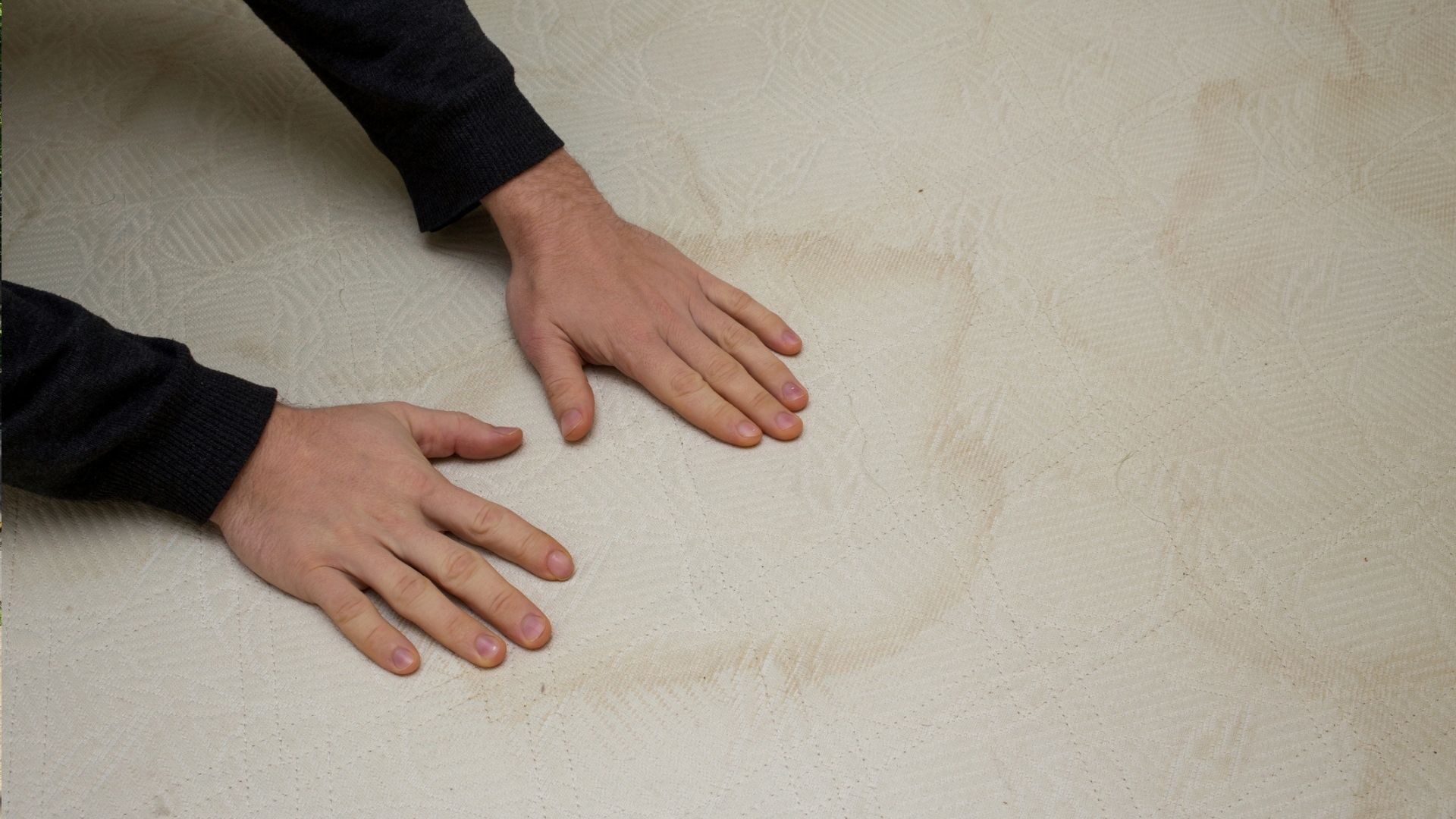
Yellow stains may look gross but trust us, they are normal. They are typically caused by a build-up of bodily fluids such as sweat, urine and sebum.
When these fluids are exposed to oxygen, they react with the mattress fabrics and produce yellow stains.
Other potential stain culprits include vomit, urine and food spills so unless you want bacteria to spread and smells to occur, then you need to tackle these stains as soon as possible.

Rachael has a keen interest in all things sleep, including her expert knowledge on mattress cleaning, providing readers with the best hacks and tips to keep their beds clean, as well as trying out the latest viral cleaning products. Rachael also reports on leading mattress brands such as Helix, Saatva and Nectar, writing articles designed to help readers understand what they need from a new bed. She also enjoys reviewing home, travel and tech gadgets, especially anything that has been designed to make life easier like smart home gadgets. During the last 15 years, Rachael has contributed to various publications including Tom’s Guide, Creative Bloq, The Independent, The Spectator, Daily Express and more.
You must confirm your public display name before commenting
Please logout and then login again, you will then be prompted to enter your display name.
